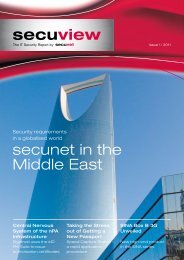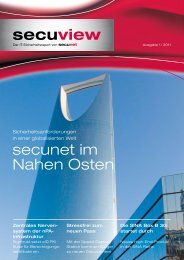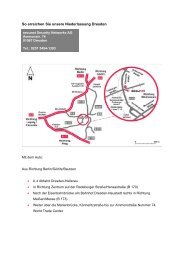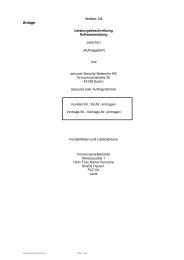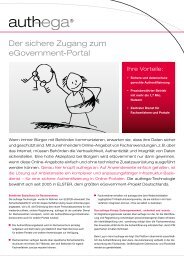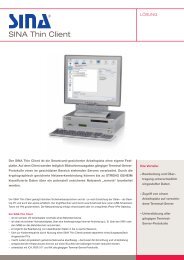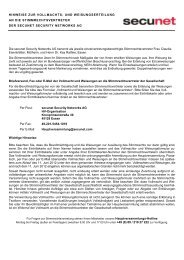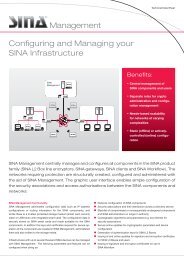Download as PDF - Secunet
Download as PDF - Secunet
Download as PDF - Secunet
Create successful ePaper yourself
Turn your PDF publications into a flip-book with our unique Google optimized e-Paper software.
International<br />
Automation is the Way<br />
Forward for Border Control<br />
secunet eGates securely manage incre<strong>as</strong>ing p<strong>as</strong>senger numbers at national borders<br />
Globalisation h<strong>as</strong> led to a steady incre<strong>as</strong>e in private and professional<br />
mobility. Short-haul flights have become an attractive<br />
alternative to travelling by train or car. For airports, this means<br />
that more and more p<strong>as</strong>sengers have to be cleared on arrival.<br />
The International Air Transport Association (IATA) estimates<br />
that, in 2013, the milestone of three billion p<strong>as</strong>sengers worldwide<br />
will be exceeded. 1 This development poses multiple challenges<br />
for airports, <strong>as</strong> p<strong>as</strong>sengers should not be expected to<br />
wait in unre<strong>as</strong>onably long queues to p<strong>as</strong>s through the security<br />
gate or border control. At the same time, security considerations<br />
must under no circumstances be compromised <strong>as</strong> the<br />
threat of terrorism remains acute<br />
The solution lies in biometric data<br />
A good option for managing incre<strong>as</strong>ed p<strong>as</strong>senger volume<br />
at borders is to provide electronic control gates – so-called<br />
‘Automated Border Control Systems’ or eGates for short.<br />
Utilising the biometric data stored in electronic travel documents<br />
(e.g. the digitised facial image of the traveller),<br />
eGates allow partial automation of border control<br />
processes whilst retaining the same high level of<br />
security: When the p<strong>as</strong>sport is placed on the document<br />
reader, its electronic and optical security features<br />
are checked and the biometric data is read.<br />
P<strong>as</strong>sengers authorised to use the system can then<br />
step into the eGate. Here, a camera integrated into<br />
the exit door automatically takes a photo of the<br />
traveller’s face. This data is then compared to the<br />
p<strong>as</strong>sport-picture read before. If the biometric data<br />
matches, the p<strong>as</strong>senger is cleared to p<strong>as</strong>s, i. e. to<br />
cross the border.<br />
As the eP<strong>as</strong>sport is read and the<br />
p<strong>as</strong>senger’s face is scanned, the<br />
same data is also displayed on<br />
the immigration control officer’s<br />
monitor.<br />
The process offers significant benefits to all parties<br />
involved: on the one hand, it reduces queuing time for<br />
p<strong>as</strong>sengers and airport operators benefit from optimised<br />
p<strong>as</strong>senger flows; on the other hand, border<br />
police officers get valuable support without losing<br />
control over the process.<br />
1<br />
See http://www.iata.org/pressroom/facts_figures/Documents/<br />
economic-outlook-media-day-dec2012.pdf<br />
14 » 1 | 2013



